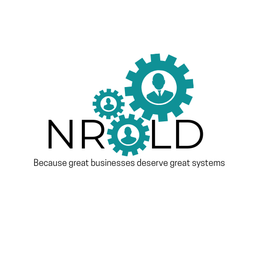How to Automate SEO Using ChatGPT + Google Sheets: A Step-by-Step Guide
What if you could automate these tasks? What if you could get back those hours while still producing high-quality, consistent work? You can, and all you need are two tools you probably already use: ChatGPT and Google Sheets.

This guide will provide you with a simple, step-by-step framework to automate your SEO workflows. You don’t need to be a coder or a spreadsheet wizard to do this. You just need to be ready to work smarter, not harder.
Step 1: Set Up Your Automation Workspace
Before you can start automating, you need to connect ChatGPT to Google Sheets. This is done with a special add-on. Don't worry, it's a simple, one-time setup.
1. Get the Add-On: GPT for Sheets™ and Docs™
This is the most popular and reliable add-on for this job.
- Open a new Google Sheet.
- Go to the menu and click Extensions > Add-ons > Get add-ons.
- Search for "GPT for Sheets" and install the official add-on.
- Follow the prompts to give it the necessary permissions.
2. Get Your OpenAI API Key
The add-on needs an API key to talk to ChatGPT. Think of an API key as a special password that allows your Google Sheet to use the ChatGPT service.
- Go to the OpenAI API keys page (platform.openai.com/api-keys). You will need to create an account if you don't have one.
- Click "Create new secret key."
- Give your key a name (e.g., "Google Sheets SEO").
- Copy this key immediately. For security reasons, you will not be able to see it again.
- Important Note: Using the API is not free, but it is incredibly cheap. Generating hundreds of meta descriptions might only cost you a few cents. It's far cheaper than your time.
3. Connect the API Key to Your Google Sheet
- Back in your Google Sheet, go to Extensions > GPT for Sheets™ and Docs™ > Set API key.
- Paste your secret key into the box and click "Save."
Your workspace is now ready. You have successfully created a "smart" spreadsheet that can use ChatGPT in any cell.
Step 2: Automate Meta Descriptions and Title Tags
This is the perfect first task to automate. It's a common pain point and provides an immediate, obvious benefit. Let's say you have 50 blog posts that need unique title tags and meta descriptions.
1. Set Up Your Sheet
Create three columns:
- Column A: Your primary keyword or blog post topic.
- Column B: Title Tag (This is where the magic will happen).
- Column C: Meta Description (This too).
2. Write Your First Formula
Go to cell B2. We want to generate a title tag for "How to brew pour-over coffee." We will use the =GPT() function. The formula is structured like this: =GPT("Your prompt", [cell with your input]).
In cell B2, type the following formula:
=GPT("Write a compelling, SEO-friendly title tag under 60 characters for a blog post about: " & A2)
Press Enter. In a few seconds, ChatGPT will generate a title tag for you right in the cell.
3. Write the Meta Description Formula
Now, let's do the same for the meta description. Go to cell C2 and type:
=GPT("Write an engaging meta description under 155 characters for a blog post about '" & A2 & "'. The description should encourage users to click.")
4. Automate for All Rows
Here comes the best part. You don't have to retype the formula for every row.
- Click on cell B2. You will see a small blue square in the bottom-right corner.
- Click and drag this blue square down the column.
Google Sheets will automatically apply the formula to all your topics, generating unique titles and descriptions for every single one. You just did an hour's worth of work in 10 seconds.
Step 3: Automate Keyword Clustering for Content Strategy
Keyword clustering is the process of grouping related keywords together. This helps you understand which keywords you can target in a single piece of content. Doing this manually for hundreds of keywords is tedious and subjective.
Let's automate it.
1. Set Up Your Sheet
Create two columns:
- Column A: A list of all your keywords.
- Column B: The "Keyword Cluster" ChatGPT will assign.
2. Write the Clustering Formula
In cell B2, you'll write a prompt that asks ChatGPT to act as a categorizer.
Type the following formula in cell B2:
=GPT("Analyze the search intent of the keyword '" & A2 & "'. Assign it to a single, broader topic cluster. Answer with just the cluster name. Examples: 'Running Gear', 'Beginner Training', 'Running Nutrition'.")
3. Drag to Automate and Sort
Press Enter, and then drag the formula down the entire list of keywords. ChatGPT will analyze each keyword and assign it to a group.
Once it's done, you can use Google Sheets' Data > Sort range function to sort Column B alphabetically. Now you will see all your keywords neatly grouped together, giving you a clear content plan. You know exactly what to write about and which keywords belong in each article.
Step 4: Automate FAQ and Content Outline Generation
You can even use this method to kickstart your content creation process.
- For FAQs: Use a prompt like: =GPT("Generate 4 common questions for an FAQ section about the topic: " & A2)
- For Content Outlines: Use a prompt like: =GPT("Create a blog post outline with H2 headings for an article titled: " & A2)
These prompts give you a ready-made structure for your articles, helping you defeat writer's block and ensure you cover all the important points.
Action builds business. Start small, start smart—then scale.

This content is AI-assisted and reviewed for accuracy, but errors may occur. Always consult a legal/financial professional before making business decisions. nrold.com is not liable for any actions taken based on this information.


